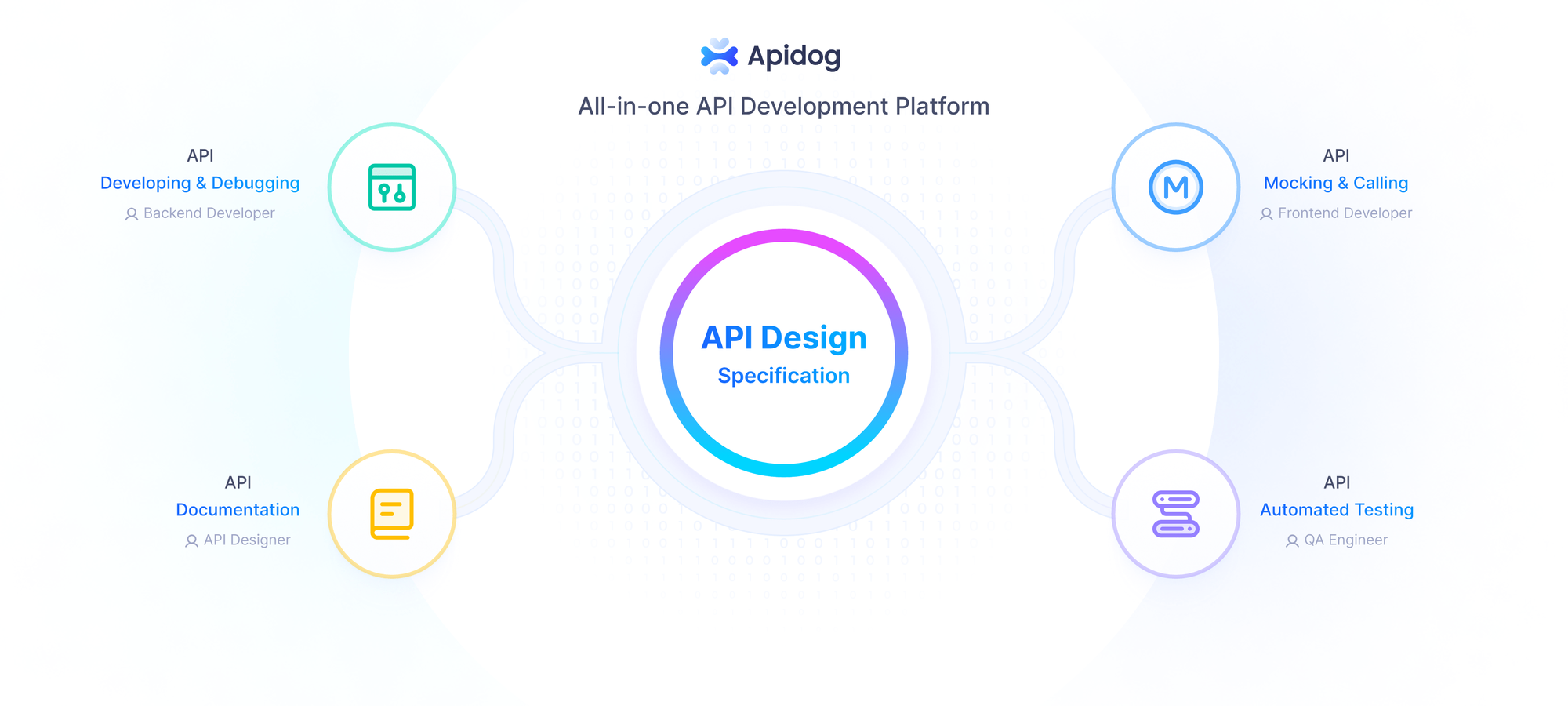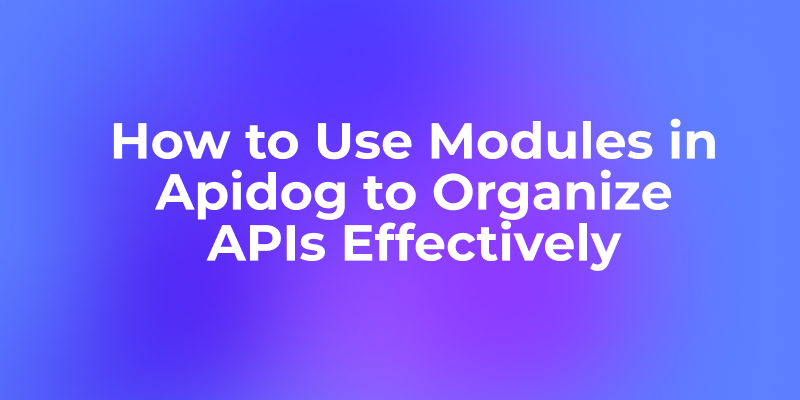In the world of software development, API wrappers play a crucial role in simplifying the interaction between applications and APIs. An API wrapper is essentially a layer of code that encapsulates the complex operations of an API, providing a more user-friendly interface for developers. This layer abstracts the underlying details of the API, allowing developers to integrate and interact with various services with ease and efficiency.
The importance of API wrappers cannot be overstated. They not only streamline the process of making API calls but also enhance code readability, maintainability, and security. By encapsulating API calls within a wrapper, developers can handle errors more gracefully, manage authentication more securely, and ensure that their codebase remains clean and modular.
This article aims to provide a comprehensive guide to understanding, implementing, and utilizing API wrappers. We will explore the benefits of using API wrappers, delve into the technical details of how they work. Whether you are a seasoned developer or just starting, this guide will equip you with the knowledge and tools to effectively leverage API wrappers in your projects.
What are API Wrappers?
API wrappers are a fundamental concept in modern software development, designed to streamline and simplify interactions with various APIs. At their core, API wrappers serve as a layer of abstraction over the raw API calls, providing a more intuitive and user-friendly interface for developers. This abstraction layer hides the complexities and intricacies of the underlying API, allowing developers to focus on the essential functionality without getting bogged down by the details.
To understand API wrappers, it's crucial to distinguish them from the APIs themselves. An API (Application Programming Interface) is a set of rules and protocols that allows different software applications to communicate with each other. APIs define the methods and data structures that developers can use to interact with a particular service or application. However, directly interacting with an API can often involve complex and repetitive tasks, such as constructing HTTP requests, handling authentication, and parsing responses.
This is where API wrappers come into play. An API wrapper takes care of these repetitive and error-prone tasks by encapsulating the API's functionality within a more manageable and cohesive structure. Instead of writing code to handle the low-level details of each API call, developers can use the wrapper's methods, which internally manage these operations. This not only saves time but also reduces the likelihood of errors and improves code readability.
Common use cases for API wrappers include integrating third-party services, such as social media platforms, payment gateways, and cloud services, into an application. For instance, a developer looking to integrate Twitter functionality into their app can use a Twitter API wrapper to handle tasks like fetching tweets, posting updates, and managing user authentication. This allows the developer to focus on building the core features of their application rather than dealing with the intricacies of the Twitter API.
In essence, API wrappers are a powerful tool for enhancing the efficiency and reliability of software development. By providing a simplified interface for interacting with complex APIs, they enable developers to build robust applications more quickly and with greater ease.
Benefits of Using API Wrappers
- Simplification of complex API calls: One of the primary advantages is the simplification of complex API calls. By abstracting the intricate details of the underlying API, wrappers provide a more straightforward and intuitive interface for developers. This simplification means that instead of dealing with the intricacies of constructing HTTP requests and handling responses, developers can focus on the core functionality of their applications, leading to faster development cycles and reduced complexity.
- Improved code readability and maintainability: Another critical benefit of API wrappers is improved code readability and maintainability. Code that directly interacts with raw APIs can often become convoluted and challenging to follow, especially when dealing with multiple endpoints and various data formats. API wrappers encapsulate these interactions within well-defined methods and classes, making the codebase cleaner and more organized. This not only makes it easier for developers to understand and modify the code but also facilitates better collaboration within development teams.
- Enhanced security through encapsulation: Enhanced security is another significant advantage provided by API wrappers. Wrappers can handle authentication and authorization mechanisms more securely, ensuring that sensitive information, such as API keys and tokens, is managed appropriately. By encapsulating these security-related aspects, wrappers reduce the risk of exposing critical credentials and make it easier to implement best practices for secure API interactions.
- Ease of error handling and debugging: Error handling and debugging are also greatly simplified with the use of API wrappers. Instead of scattering error-checking code throughout the application, developers can centralize error handling within the wrapper. This makes it easier to manage exceptions and ensure consistent error reporting across the application. Moreover, debugging becomes more straightforward, as the wrapper can provide detailed error messages and logging capabilities, helping developers quickly identify and resolve issues.
- Example scenarios showcasing these benefits: For example, consider a scenario where a developer needs to interact with a payment gateway API. Directly working with the API might involve numerous steps, such as setting up requests, managing authentication, and handling various types of responses. An API wrapper for the payment gateway can streamline this process by providing a simple interface to perform transactions, check payment statuses, and manage customer data. This not only speeds up development but also ensures that the integration is more reliable and easier to maintain.
How API Wrappers Work
API wrappers function as an intermediary layer between an application and an API, simplifying and managing the communication process. To understand how they work, it's essential to delve into their structure and the way they interact with the underlying APIs.
Structure of an API Wrapper
An API wrapper typically consists of several key components that work together to abstract the complexity of direct API interactions. These components include:
Base Class: This is the core of the wrapper, providing a foundation for all API interactions. It often contains methods for setting up connections, managing authentication, and sending requests.
Endpoint Methods: These are specific functions that correspond to different endpoints of the API. Each method handles a particular type of request, such as fetching data, posting new entries, updating existing records, or deleting resources. These methods encapsulate the necessary parameters and process the responses, providing a straightforward interface for developers.
Authentication Handlers: Many APIs require authentication to ensure secure access. The wrapper includes mechanisms to manage authentication tokens, API keys, or other credentials, making the process seamless for the developer.
Error Handling: A robust API wrapper includes comprehensive error handling to manage different types of API errors gracefully. This might involve retry logic, logging errors, or raising custom exceptions that can be caught and handled by the application.
Configuration Options: Wrappers often provide configuration options that allow developers to customize various aspects of the API interaction, such as setting timeouts, choosing response formats, or enabling debugging features.
Interaction with the Underlying API
API wrappers interact with the underlying API by encapsulating the details of the HTTP requests and responses. Here’s a step-by-step look at how this interaction typically works:
Initialization: The developer initializes the wrapper, often providing necessary configuration parameters like API keys, base URLs, and other settings.
Method Invocation: When the developer calls a method on the wrapper, the wrapper constructs the appropriate HTTP request based on the method's parameters. This includes setting the request type (GET, POST, PUT, DELETE), adding necessary headers, and formatting the request body.
Sending the Request: The wrapper sends the constructed HTTP request to the API endpoint. This is usually handled by an internal HTTP client that manages the network communication.
Handling the Response: Upon receiving the response from the API, the wrapper processes the response data. It checks for errors, parses the response (typically from JSON or XML), and returns a structured result to the developer.
Error Management: If the API returns an error, the wrapper's error handling mechanisms come into play. This might involve retrying the request, logging the error details, or raising an exception for the developer to handle.
Examples of Popular APIs and Their Wrappers
To illustrate how API wrappers function in practice, let's look at a couple of popular APIs and their corresponding wrappers:
Twitter API Wrapper: The Twitter API provides a vast array of endpoints for interacting with Twitter data, such as fetching tweets, posting updates, and managing user information. A popular Python wrapper for the Twitter API is tweepy. tweepy abstracts the details of OAuth authentication, request construction, and response handling, allowing developers to interact with Twitter using simple, intuitive methods.
Google Maps API Wrapper: The Google Maps API offers various services, including geocoding, directions, and place searches. A widely used JavaScript wrapper for this API is Google Maps JavaScript API. This wrapper simplifies the process of integrating Google Maps into web applications by providing easy-to-use functions for map manipulation, marker management, and event handling.
In both examples, the wrappers handle the complexities of API communication, allowing developers to focus on building application features rather than managing low-level API interactions.
Best Practices for API Wrappers
Creating an effective API wrapper requires attention to several best practices to ensure the wrapper is robust, maintainable, and user-friendly. Here are some key best practices to consider when developing API wrappers:
Writing Clean and Maintainable Code:
One of the primary goals of an API wrapper is to simplify the interaction with the API. To achieve this, it's crucial to write clean and maintainable code. This involves:
- Adhering to Coding Standards: Follow consistent coding standards and conventions. This makes your code easier to read and understand for others who may work on it in the future.
- Modular Design: Break down the wrapper into modular components. This allows for easier maintenance and testing. For instance, separate concerns like authentication, request handling, and error management into distinct modules or classes.
- Comprehensive Documentation: Document your code thoroughly. Include clear explanations of each method, its parameters, expected responses, and possible errors. This helps other developers understand how to use the wrapper effectively.
Documentation Standards for API Wrappers:
Good documentation is essential for any API wrapper. It should provide a comprehensive guide on how to use the wrapper, including:
- Getting Started Guide: Include a basic tutorial on how to install and initialize the wrapper. Provide examples of common use cases to help users get started quickly.
- API Reference: Offer detailed descriptions of each method, including parameters, return types, and example usage. This serves as a quick reference for developers.
- Troubleshooting Section: Address common issues and errors that users might encounter. Provide solutions or workarounds to help users resolve these issues efficiently.
Versioning and Backward Compatibility:
As APIs evolve, so should their wrappers. Implementing versioning and maintaining backward compatibility are critical for ensuring that existing applications using the wrapper do not break with updates:
- Semantic Versioning: Follow semantic versioning principles (e.g., MAJOR.MINOR.PATCH) to communicate changes clearly. Major versions can introduce breaking changes, while minor versions add functionality, and patch versions fix bugs.
- Deprecation Strategy: When introducing breaking changes, deprecate old methods gracefully. Provide ample notice to users and offer migration guides to help them transition to the new version.
Performance Considerations and Optimization Techniques:
Performance is a key consideration when developing API wrappers, as it can impact the responsiveness and efficiency of applications:
- Efficient Request Handling: Optimize the way requests are constructed and sent. Use connection pooling and keep-alive mechanisms to reduce the overhead of establishing new connections.
- Asynchronous Operations: Where appropriate, implement asynchronous methods to improve performance, especially for APIs that support concurrent requests. This can help avoid blocking operations and improve the overall responsiveness of the application.
- Caching: Implement caching mechanisms for frequently requested data. This reduces the number of API calls and speeds up data retrieval.
Error Handling and Logging
Robust error handling and logging are essential for creating a reliable API wrapper:
- Consistent Error Management: Implement a consistent strategy for handling errors. Use custom exceptions to provide meaningful error messages and handle different types of errors appropriately (e.g., network errors, authentication failures, API-specific errors).
- Logging: Include logging capabilities to help with debugging and monitoring. Log important events, errors, and performance metrics to help identify issues and improve the wrapper over time.
Security Best Practices
Security is paramount when interacting with APIs, especially when dealing with sensitive data or operations:
- Secure Authentication: Implement secure methods for handling authentication tokens and credentials. Avoid hardcoding sensitive information and use environment variables or secure storage solutions.
- Rate Limiting and Throttling: Respect the API's rate limits to avoid being blocked or throttled. Implement retry logic with exponential backoff to handle rate limit errors gracefully.
- Input Validation: Validate all inputs to ensure they meet the API's requirements and to prevent injection attacks or other security vulnerabilities.
By following these best practices, developers can create robust, efficient, and user-friendly API wrappers that simplify API interactions and enhance the overall development experience. These practices not only improve the quality of the wrapper but also ensure that it remains maintainable and scalable as the underlying APIs and applications evolve.
How Apidog Can Help

To streamline the process of managing APIs and ensure that your API wrappers are as effective as possible, consider using tools like Apidog. Apidog is a comprehensive API management platform that provides a range of features designed to simplify the development, testing, and documentation of APIs.
- API Design and Documentation: Apidog allows you to design your API visually, generate detailed documentation automatically, and ensure that your API wrapper aligns with the API's specifications. This makes it easier to keep your wrapper up-to-date with any changes to the API.
- Mocking and Testing: With Apidog, you can create mock servers to simulate API responses, enabling you to test your wrapper thoroughly without needing access to the live API. This helps catch potential issues early in the development process.
- Collaboration and Version Control: Apidog's collaboration features allow multiple developers to work on the API design and wrapper simultaneously. Version control capabilities ensure that all changes are tracked and managed effectively, facilitating smooth updates and maintenance.
- Monitoring and Analytics: Apidog provides real-time monitoring and analytics for your APIs, giving you insights into performance and usage patterns. This information can help you optimize your API wrapper and ensure it meets the needs of your application.
By incorporating Apidog into your API development workflow, you can enhance the efficiency and reliability of your API wrappers, making it easier to manage and scale your API integrations.



